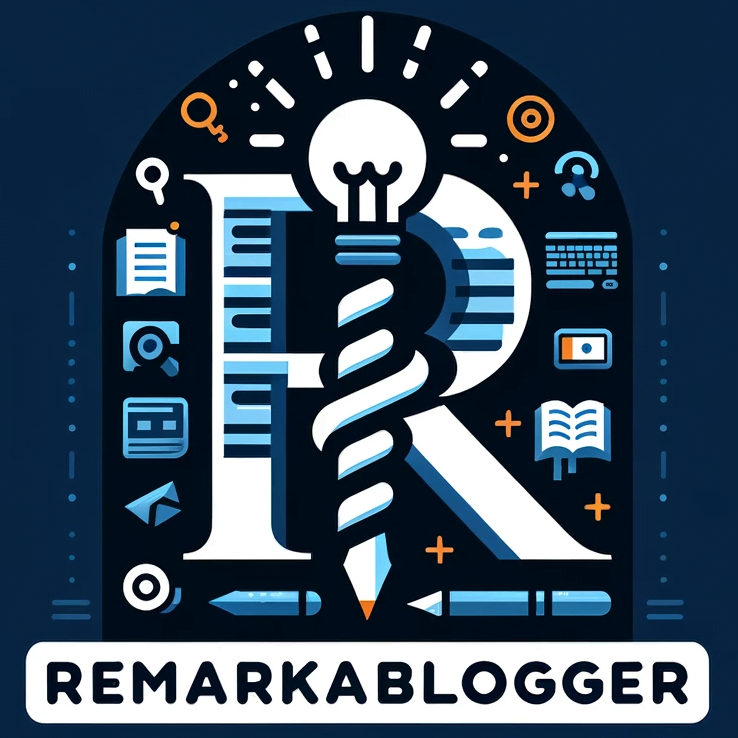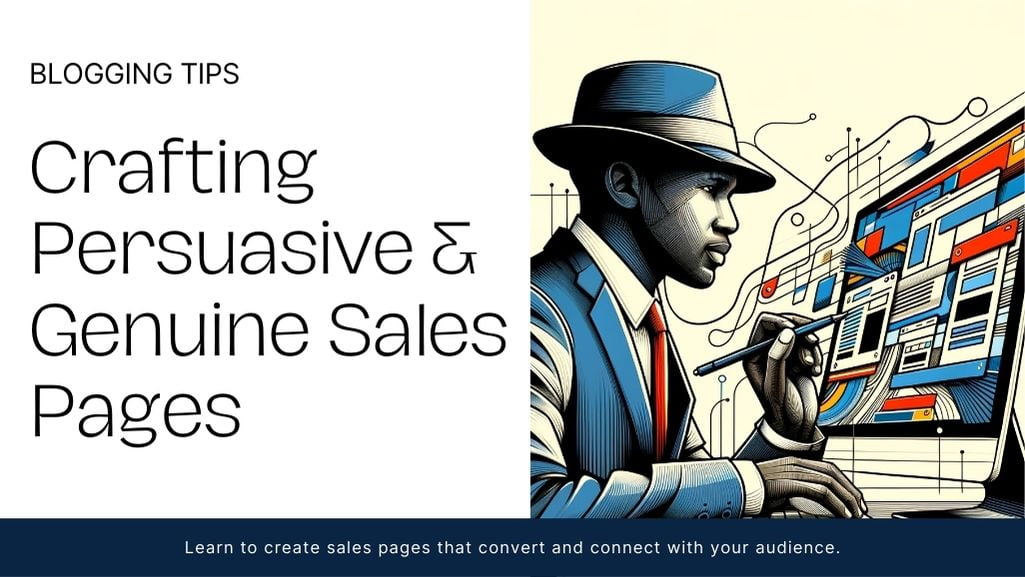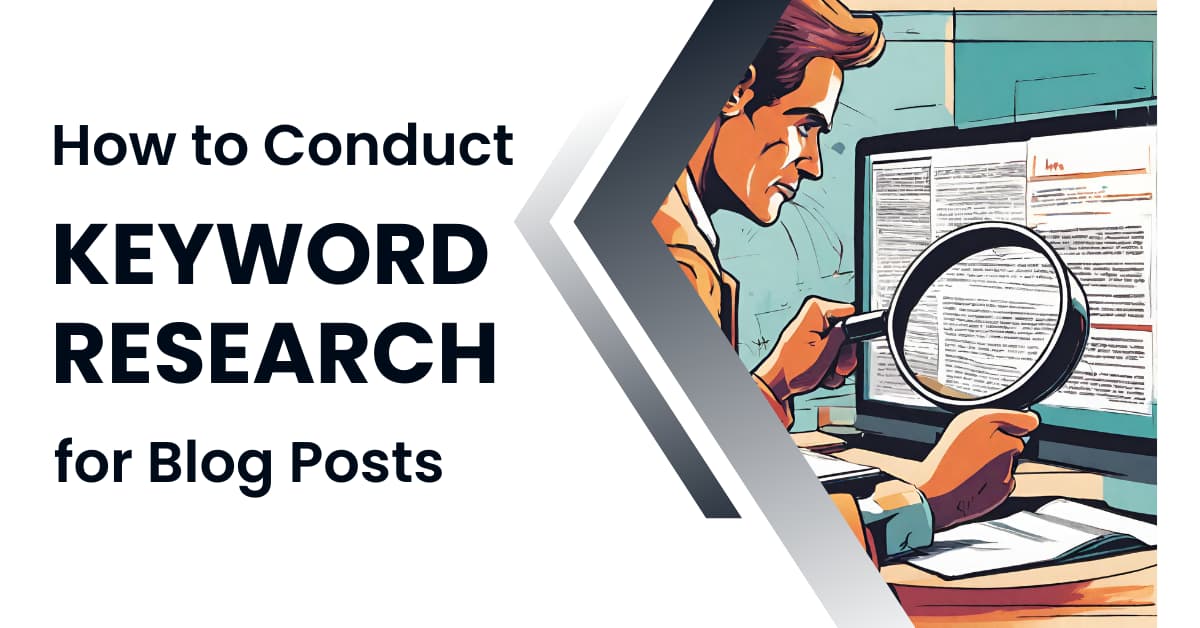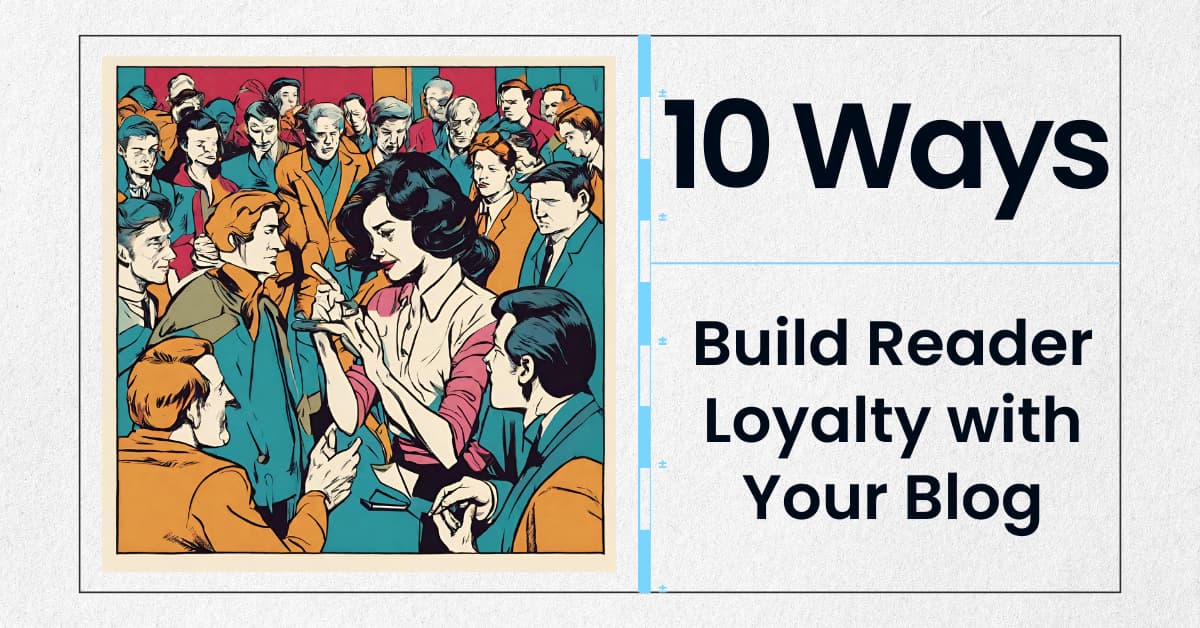Are you ready to turn website visitors into buyers?
Check out this straightforward guide to learn how to make a sales page that grabs attention and connects with what your audience needs most.
Whether you’re a small business owner or want to start a business, find out the tricks that can seriously increase your sales.
Say bye to guessing and hello to strategic selling that talks right to your customers.
Get ready to unlock the secrets of attention-grabbing headlines, convincing copy, and smooth designs that make your customers confidently click “buy”.
It’s time to turn your sales page into a sales machine!
Understanding the Anatomy of Effective Sales Pages
When you’re setting up a sales page, think of it as the backbone of your online marketing effort – it’s where your offerings and your customer’s needs meet.
Every element should work together to grab attention, build interest, and convince someone to take action, be it make a purchase, sign up for a newsletter, or download a guide.
Getting into the mindset of small business owners, the primary goals are often clear: attract more clients and ensure sustainability for their business.
Defining Sales Page Objectives and Audience Needs
First things first, it’s critical to have a bull’s-eye view of what you want to achieve with your sales page. Is it to generate leads, sell a product, promote a service?
Once you have your objectives determined, you’ll need to understand your audience. Business owners should recognize two main customer groups: those already familiar with your brand (warm audience), and those who aren’t (cold audience).
Equip your sales page to serve both by identifying their unique needs and concerns.
For small business owners, it’s common to face challenges like tight budgets, time limitations, or lack of visibility.
Addressing such pain points in your sales copy can be a strong motivator for clients to choose your service.
Also, your sales page should reflect the core values you stand for and make promises that match real customer experiences to build trust and reliability.
Distinguishing Between Short-Form and Long-Form Sales Pages
On the design front, sales pages typically come in two types: short-form and long-form, both customized for different purposes and audiences.
If the offer is straightforward and the commitment level from the buyer is low, then short-form pages are the best bet. They are concise, get straight to the point, and work well for impulse buys or simple services, offering just enough information to make the reader curious and ready to make a quick decision.
However, when your service has multiple layers or you’re showcasing a higher-priced offer, long-form sales pages might suit you better.
They give you space to deeply explain the benefits, share detailed testimonials, and build a full case as to why your offering deserves investment.
The problem?
They can overwhelm with too much information and might turn away visitors if not executed carefully.
For entrepreneurs, it’s vital to evaluate the complexity of your offer and your audience’s preferences.
If they’re busy people who value their time and prefer quick, easy-to-digest content, a short-form page could be the winner.
However, if your service requires some explanation and your audience cares about depth and detail, a long-form page could work better.
In essence, the length and content density of your sales page should match the nature of your offer and the behavior patterns of your target audience.
Balancing these elements takes insight and testing different approaches to find the perfect mix that leads to conversions and satisfied clients.
Crafting Compelling Sales Page Headlines
Crafting a headline for your sales page is like finding the right key to open a treasure chest – it’s the essential element that can unlock your audience’s interest and get them to read on.
The best headlines grab attention and make promises that your content must fulfill.
Utilizing Power Words and Emotional Triggers
Headlines gain strength from power words – these are words that catch the eye and tug at the heart or mind, making a person feel something strong.
For entrepreneurs, words that hint at making things better – like ‘boost’, ‘unlock’, or ‘elevate’ – often strike a chord because they target their desire to grow their business and gain more independence.
These words can be very effective if you use them to highlight a challenge your product or service can help overcome.
But, be careful with over-the-top language that overpromises.
It’s like crying wolf – do it once too often, and people stop believing you.
Instead, aim for honest, strong language that builds credibility over time.
Balancing Clarity and Creativity
Your headline should also be clear and to the point, laying out what you’re offering and why it matters.
Answer the question, “What’s in it for me?” for your potential customers right from the start.
Yet, clarity doesn’t mean dull.
You can be creative without making your headline a puzzle.
It should catch the eye enough to stand out, but also be straightforward so that your reader knows right away what you’re offering.
Consider what you promise in your headlines, and make sure it aligns with the overall value you provide.
The headline is at its core a promise of value that will be explained further once the reader continues onto the rest of the content.
Don’t be afraid to test out different headlines to see which one draws more people and gets them to take the next step.
Try changing a word here or there and see what works better.
Creative headlines should directly speak to an entrepreneur’s goals, like making things run smoother, cutting costs, or finding the right partner.
When you get it right, a headline can spark interest and lead potential customers to the solutions they’ve been looking for.

Writing Persuasive and Customer-Centric Sales Copy
When you are writing the words that will fill your sales page, it’s like you’re talking directly to your future customers.
You want to show them that you get what they’re going through and you have the answer they need.
It’s not just about what your product is; it’s about what it does for them.
Focusing on Customer Benefits Over Product Features
Imagine someone tells you about a great new drill.
Now, they could talk about the drill’s speed or the battery life, but what if they told you that because of this drill, you can build a treehouse in half the time?
That’s what focusing on benefits over features means.
To write copy that really clicks with small business owners, dig into the real troubles they face every day and show how your offer tackles them head-on.
If your service helps save money, don’t just say “affordable.” Spell out exactly how much they can save.
For example, instead of saying “Our service is affordable,” you can say “Our service can save you up to $500 per year.”
By providing specific savings figures, you give potential customers a clear understanding of the financial benefits they can expect from your service. This not only adds credibility to your claims but also helps customers make informed decisions based on their budget and financial goals.
And if your product is all about saving time, give them the numbers.
Saying “saves 10 hours a week” can mean more projects done, more family time, or just breathing room in a packed schedule.
Incorporating Social Proof and Testimonials
Now, talking about how great your offer is only goes so far.
What really turns heads is hearing it straight from someone who’s already bought in and is loving it.
That’s where social proof and testimonials come in.
They’re proof that what you’re saying is for real.
When you’re picking testimonials, go for stories from people who are just like your customers.
If you’re selling to small business owners, show them praise from other small business owners.
And don’t make this stuff up – take the good things people are already saying about you online, maybe in a five-star review, and highlight them right there on your sales page.
Backing up these personal stories with some solid numbers or a nod from a big name in your industry can make your case even stronger.
It tells your visitors that not only do people like them trust you, but the experts do too.
In the end, your sales page should feel less like an ad and more like a helping hand, guiding your customers to a choice that’s going to make their work life a whole lot easier.
Designing Sales Pages for Optimal User Experience
Designing a sales page is like setting up a shop window: you want to draw people in and show them everything you have to offer in the best possible light.
The goal is to make their experience on your page so smooth and enjoyable that they’ll want to stay, browse, and eventually buy from you.
Let’s talk about how visuals and navigation play a huge role in this.
The Role of Visuals in Sales Conversion
Imagine you’re trying to explain how something works – a good diagram can make all the difference. It takes complex ideas and shows them in a simple way.
That’s the power of visuals on a sales page. They help explain your services and products quickly and effectively.
Pictures, diagrams, and graphics make your brand look slick and professional, which builds trust.
But it’s not just about looking good. You need to make sure these visuals speak directly to the entrepreneurs visiting your site.
Do the images reflect their aspirations, challenges, and successes?
That connection can be the difference between them staying on the page or leaving.
Streamlining Sales Page Navigation
When it comes to navigating your sales page, think about the ease of walking through a well-organized store.
You want enough space between the aisles – or, in this case, between different parts of your page. This is white space, and it’s crucial because it makes everything look less crowded and helps people focus on what’s important, like your calls to action (CTAs), those “Buy Now” or “Learn More” buttons.
If you’ve got videos or other kinds of media, putting them into iframes can keep your page loading fast.
You don’t want your page to take long to load, or people might leave before they even see what you’ve got.
Balance is key.
Mix up text and visuals so your page doesn’t feel too cluttered or too empty.
It should be just right, so visitors can quickly understand what you’re offering without getting lost or overwhelmed by too much information or too many things to look at.
Leveraging Multimedia to Enhance Sales Messages
Multimedia, such as videos and animations, can act as powerful tools on a sales page. They not only grab attention but can also explain your products or services in a way that words alone sometimes can’t.
Let’s dive into how these resources can be used effectively.
Including Explainer Videos and Demos
Videos that show your product in action can be incredibly convincing.
It’s one thing to read about how a product works, but seeing it in a video takes it to a whole new level.
For instance, a walkthrough video that guides viewers through the benefits and functionality of your product or service can help them picture using it in their own business operations.
You can further customize this experience for entrepreneurs by creating animated explainer videos.
These are usually less costly than live-action videos and can turn complex services or products into easy-to-understand visuals.
Integrating Customer Testimonials and Reviews
Customer testimonials can be a gold mine for credibility.
A video of a business owner talking about how your service helped them can be more convincing than written reviews.
Why?
Because seeing the person’s face, hearing the emotion in their voice, and observing their sincerity adds a level of trust that text can’t achieve.
To make these testimonials even more impactful, aim to feature a range of business owners.
This strategy ensures that different types of customers see themselves represented in the reviews, which can help them relate more closely to the success stories being shared.
By carefully selecting and organizing these reviews on your sales page, you present a rich, diverse narrative of happy customers that can be incredibly persuasive for potential buyers.
Building Trust with Transparency and Authenticity
Building trust with your customers is like making a new friend. You need to be open, honest, and show that you’re there for the right reasons.
When you build your sales page, you should keep this in mind. Let’s look at how being transparent and genuine can help you connect with your customers and earn their trust.
Presenting Honest Value Propositions
Your sales page is the place to tell it like it is. Let your customers know exactly what they can expect from your product or service.
This means not only showing the best parts but also being upfront about any limitations. If your product saves time but requires a bit of a learning curve, say so.
This kind of honesty helps manage expectations and avoids disappointment later.
It’s important to stick to the truth, even if you’re worried it might mean making fewer sales in the short term.
Remember, misleading a customer might get you a sale today, but it could lose you a lot more in the future if they feel tricked.
Addressing Objections and Offering Guarantees
Think about the doubts or worries your customers might have before they buy your product.
Maybe they’re not sure it will work for their specific situation, or perhaps they think it’s too expensive.
When you bring up these doubts and talk about them openly on your sales page, it shows you understand your customers and you’re not trying to gloss over anything.
One way to address these concerns is by offering guarantees.
A money-back guarantee or a promise to lock in a price can give customers the confidence they need to buy.
It’s like saying, “We’re so sure you’ll love what we’re offering, we’re willing to put our money where our mouth is.”
Finally, make it easy for customers to get in touch with you.
Whether it’s through a live chat on your website, a phone number, or an email address, make sure customers know they can reach out and ask questions.
Having these direct lines of communication can help clear up any last-minute doubts and shows that you’re there to support them.
By presenting honest value propositions, directly addressing potential concerns, and offering solid guarantees, you can build a foundation of trust that turns visitors into loyal customers.

Testing and Refining Sales Page Elements
Testing and refining sales page elements is a lot like tuning a car to get the best performance.
You make adjustments, run tests, and use the results to make further improvements.
This ensures your sales page runs smoothly and effectively drives more business.
A/B Testing for Data-Driven Decision Making
A/B testing is a powerful way to find out what changes to your sales page can make a big difference.
Its like comparing two recipes to see which one tastes better.
You create two versions of your sales page (Version A and Version B), each with one element changed, such as different headlines, copy, testimonials, or images.
Show these versions to similar customers and use tools to track which one works better.
But remember, you need a good number of people for your test to be reliable; this is your sample size.
If only a few people see each version, you cant be sure if one really works better than the other or if it’s just chance.
Monitoring Metrics and Feedback for Continuous Improvement
While A/B testing helps you make decisions, you also need to keep an eye on key metrics.
These are like the gauges on your dashboard, showing you how well your sales page is performing.
Look at:
- Click-through rates (CTRs)
- Bounce rates (how quickly people leave your page)
- Conversion rates (how many visitors buy something or sign up)
- Average order value (how much money each sale brings in)
But numbers don’t tell the whole story.
Listening to what business owners say about your page gives you insights beyond the data.
This feedback, the thoughts and feelings people share, is just as important because it guides you in making your sales page connect with your customers.
Leverage feedback to create a more customer-focused page.
When business owners tell you what they need, use that information to make changes they care about.
Finally, always be ready to iterate, which means to keep testing and tweaking.
The market changes, new trends emerge, and customers develop new needs.
Stay on top of these changes by continually adapting your sales page to meet them.
This ongoing process is key to keeping your sales page effective and your business growing.
Closing
You just went through a bunch of tips to turn your sales page into a customer-getting machine.
From writing catchy headlines to making a smooth design, it’s clear a good sales page needs strategic skill.
Remember, the goal is to connect with your readers by focusing on their benefits, showing real testimonials, and getting the perfect design and content mix.
Now, use these ideas.
Start by pointing out what makes you special and weave that into every part of your page.
Test, polish, and don’t be afraid to have honest talks about what your product offers.
And always be ready to adapt and change based on feedback and shifting market trends.
With your readers’ needs and likes at the heart of your sales page, you’re set to not just meet but go beyond expectations.
Jump in, fine-tune your sales approach, and watch as those curious clicks become sure buys.



